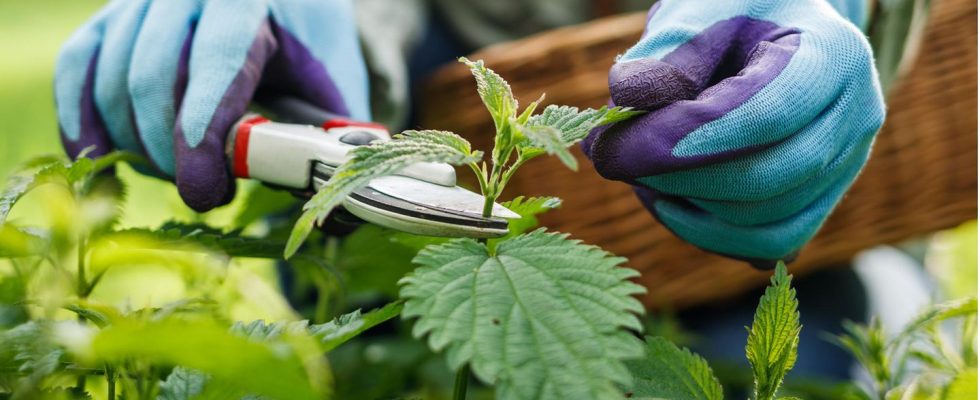force of nature
Natural fertilizer and good against pests: How to make nettle manure
The shoots of the “big nettle” (Urtica dioica) are best suited for liquid manure
© Zbynek Pospisil / Getty Images
Ornamental and crop plants draw the nutrients they need from the soil. To encourage their growth, you can make your own organic fertilizer from stinging nettles – or use the brew as a chemical-free pesticide.
Most people associate stinging nettles with a painful itch caused by contact with the skin. The medicinal and cultivated plant can do much more than just cause a rash: it is a real powerhouse and contains far more nutrients and vitamins (including silicic acid, potassium and nitrogen) than many other plants. This makes it an ideal organic fertilizer or to combat annoying pests such as aphids. In this article we will tell you everything you need to make nettle manure. We will also explain how to use the growth-promoting brew correctly afterwards.
Organic Fertilizer: These ingredients are required
Stinging nettle shoots (Urtica dioica) are said to be best suited for the production of a natural organic fertilizer. Before you harvest these, however, you must long gardening gloves pull over to minimize the risk of injury to hands and arms. Stinging nettles are particularly easy to cut off with an ordinary one secateurs. You will also need these ingredients: a large one plastic bucket and stagnant tap water – low-mineral rainwater would be even better. The mixing ratio should be 1:10, i.e. for one kilogram of fresh nettles (alternatively, you can also use 200 grams dried nettles use) come ten liters of liquid. The nutrients are completely decomposed in the liquid manure.
A notice: A metal bucket is not suitable for making nettle manure due to the fermentation process.

Depending on the exposure time, a natural fertilizer or pesticide can be produced from stinging nettles
© waldenstrom / Getty Images
Making nettle manure: Here’s how
After you have harvested the nettles, do the following:
- Cut the leaves and shoots into small pieces with (garden) scissors – ideally directly above the bucket provided for this purpose.
- Pour the recommended amount of water over the nettles so that all parts of the plant are completely covered.
- Place the bucket in a sunny spot to speed up the fermentation process and stir the manure every two days.
- After two to three weeks the mixture should be ready. You can recognize the finished liquid manure by the fact that no more bubbles can be seen.
Tip: During the fermentation process, the liquid manure begins to stink. To bind the smell of putrefaction – or more precisely the strong-smelling ingredients in it – just give something bedrock meal in the bucket.
How to apply the fertilizer correctly
Before you use the nettle manure as a nitrogenous fertilizer or for pest control, you should remove the remaining plant remains. You can simply sieve them out and dispose of them in the compost – or spread them over your vegetable or ornamental plant beds like a kind of mulch. The finished manure, on the other hand, must first be diluted before you fertilize your plants with it, in a ratio of 1:10 with water. You can then pour the liquid manure over the beds once a week.
But beware: The natural fertilizer is not suitable for peas and carrots, garlic and onions or even beans.
If, on the other hand, the nettles are to be used to combat aphids, the mixture only needs to steep for 12 to 24 hours. Then sift out the plant remains and filter the brew again through a tea towel to filter out even the smallest plant remains – otherwise they would spray bottle clog. Then you can spread the undiluted manure over the affected leaves (which don’t want to eat each other!). Important to know: Use the finished brew immediately, as it can be kept for a maximum of three days.
Sources: my beautiful garden, NABU
You might also be interested in:
This article contains so-called affiliate links. Further information are available here.


